
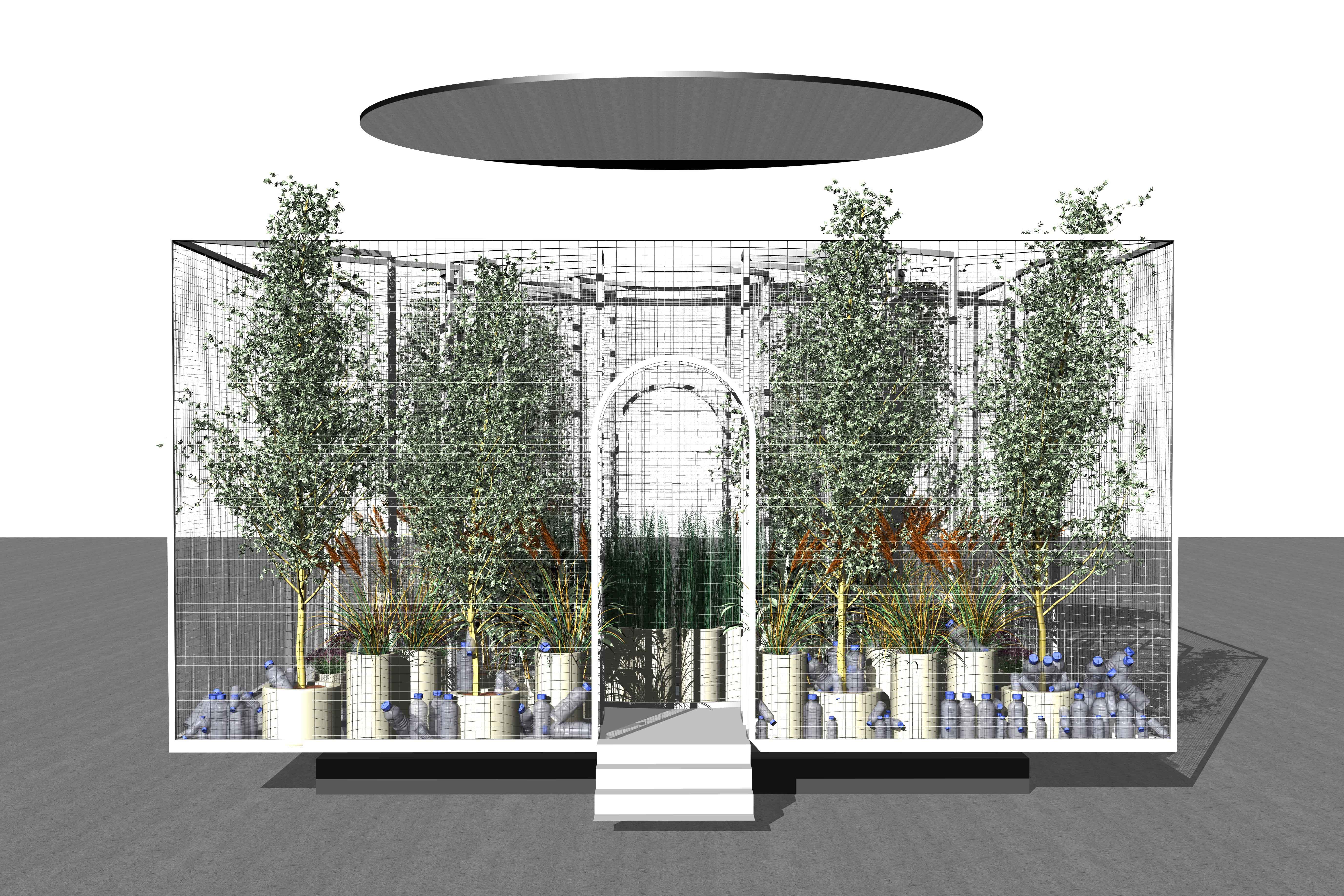

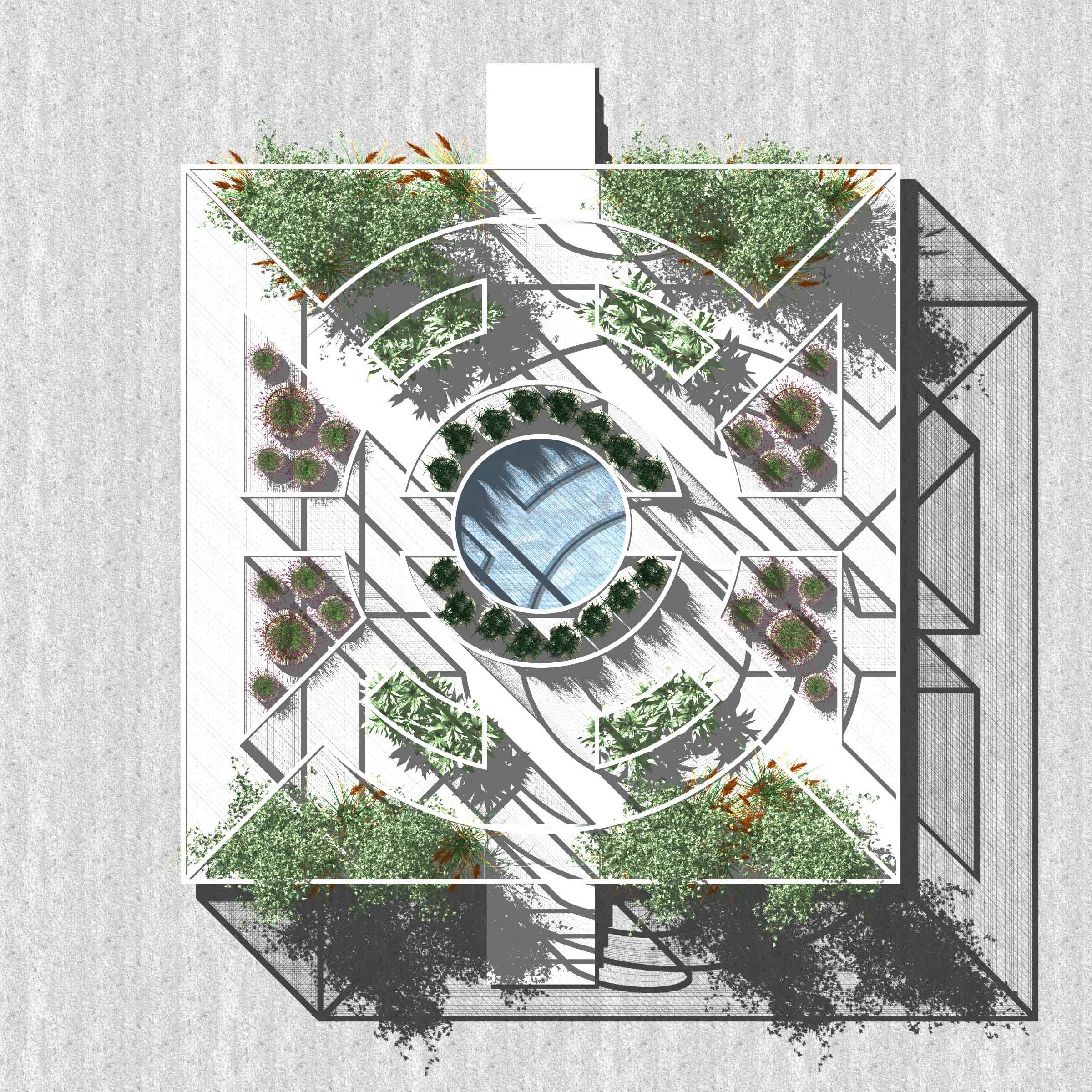
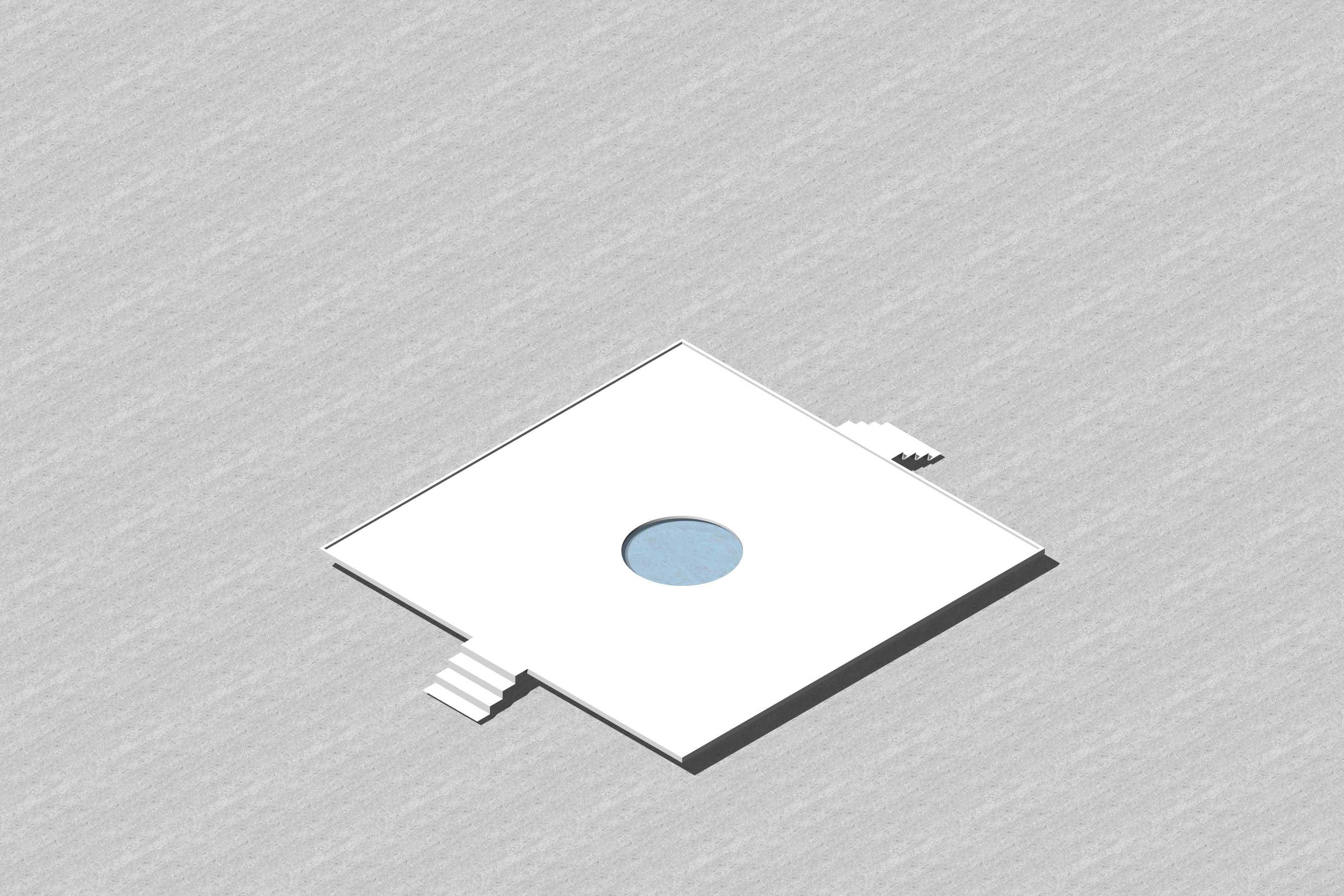
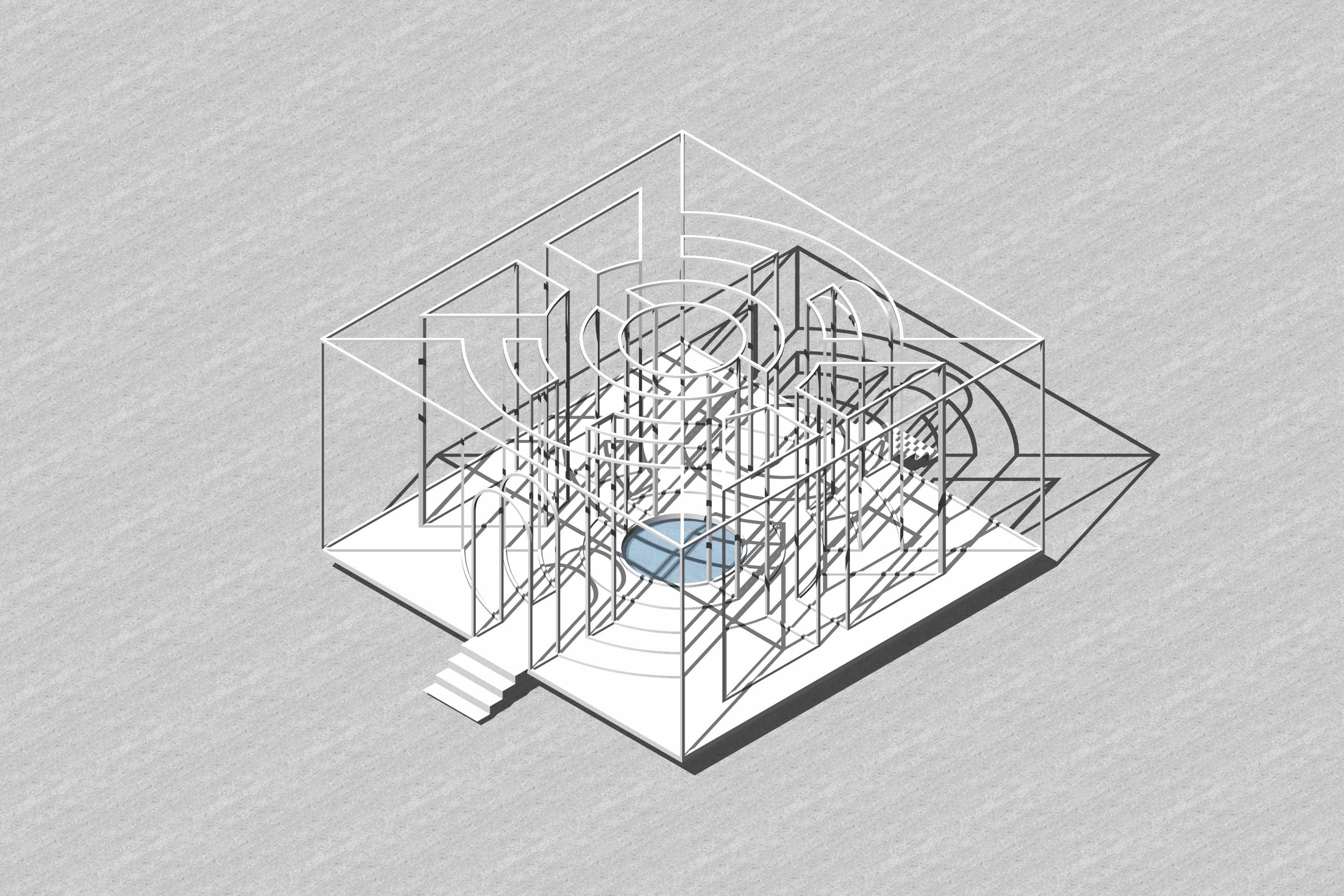
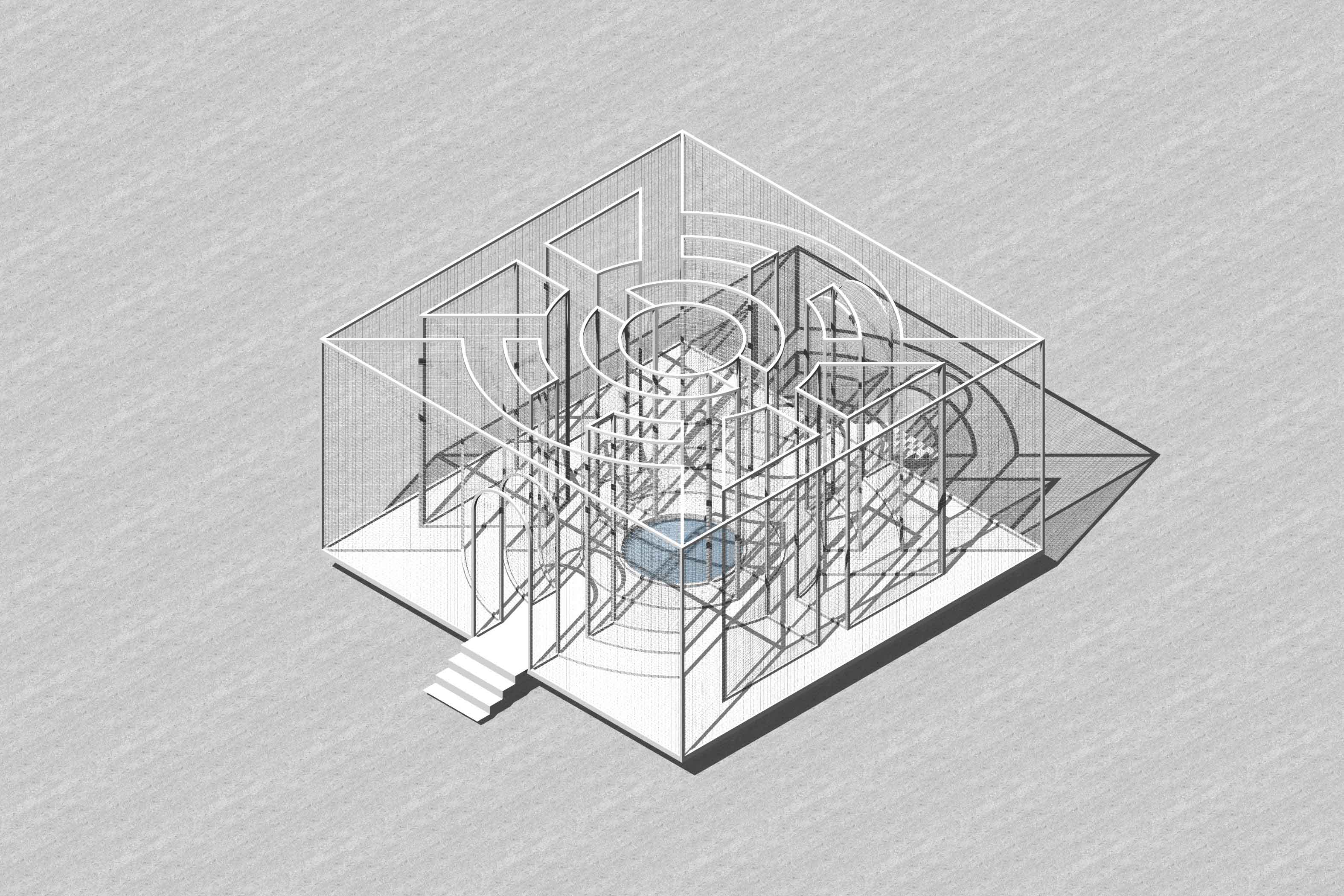
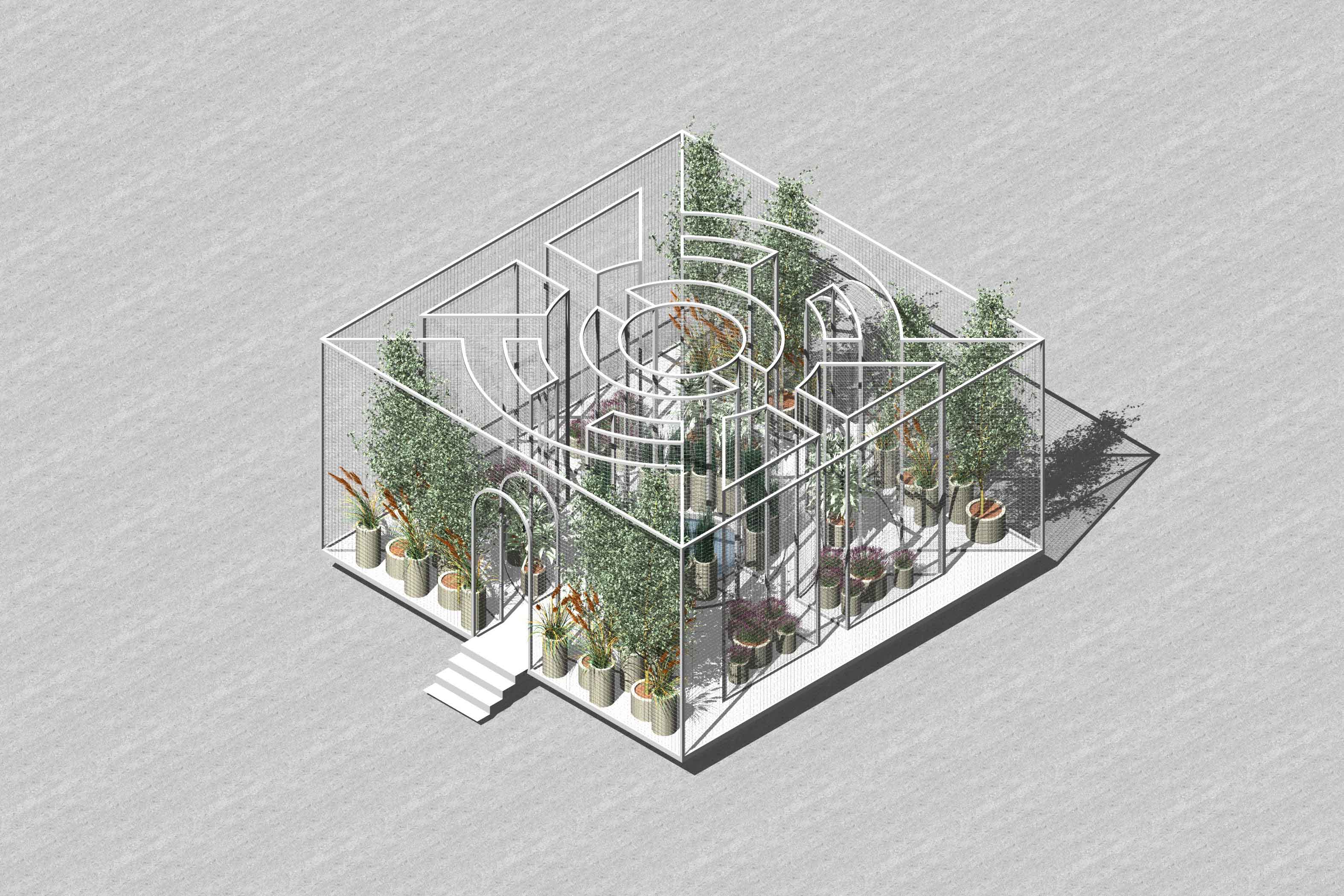
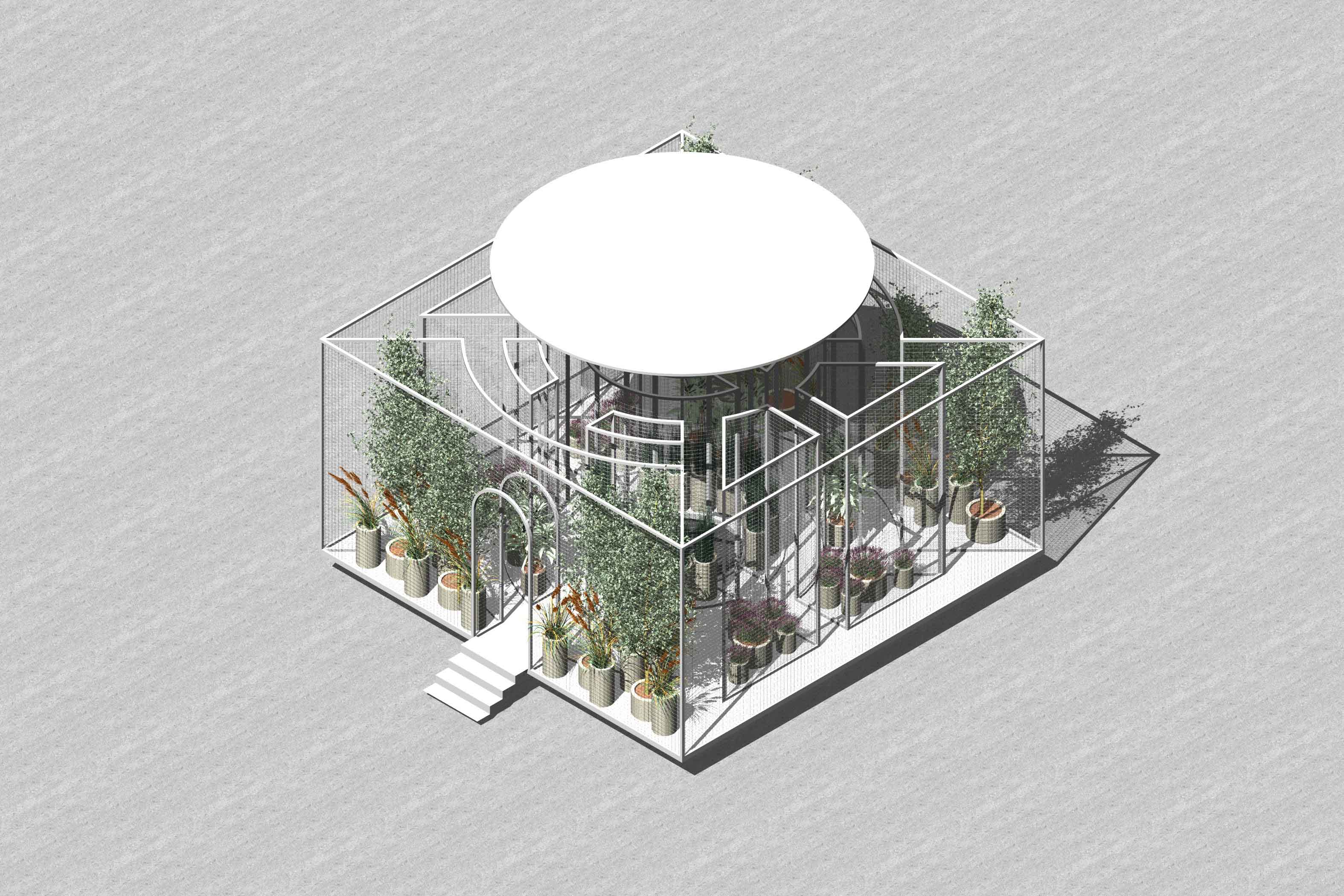
Garden of Eden is a design proposal for an architectural installation called the "Monument of Plastic."
The goal of the competition was to raise awareness about the impact of plastic packaging on our planet.
Our daily habits are saturated with the consumption of vast amounts of resources, prioritizing the convenience of immediate needs over everything else. The project was conceived as an installation that, on a small scale, illustrates the consequences of mass consumption of single-use plastic packaging.
The pavilion is envisioned as a reflection of our world, like a paradise garden accumulating with trash. The floor plan, symmetrical and with water at its center, is inspired by Persian gardens, resembling an oasis in the desert. Various plants grow in flower beds enclosed by a soft net.
Visitors would be encouraged to discard their plastic packaging among the plants when visiting the pavilion. Over time, the amount of waste in the net would increase, covering the plants and stretching the net. The former flower beds would expand, and the paths would become impassable.
In the end, no one will be able to enter the paradise garden. We can only observe the consequences of our littering.
We can look in the mirror above the pavilion and clearly see where our actions lead - but seeing a reflection may hide a glimmer of hope.